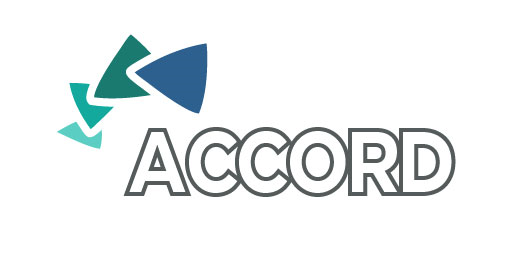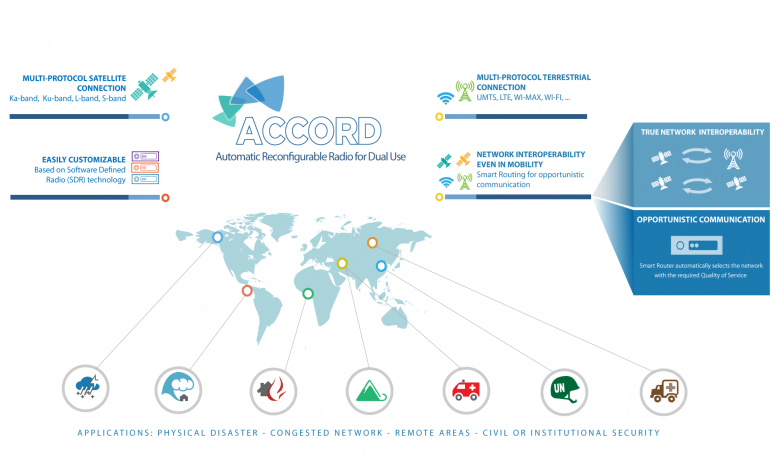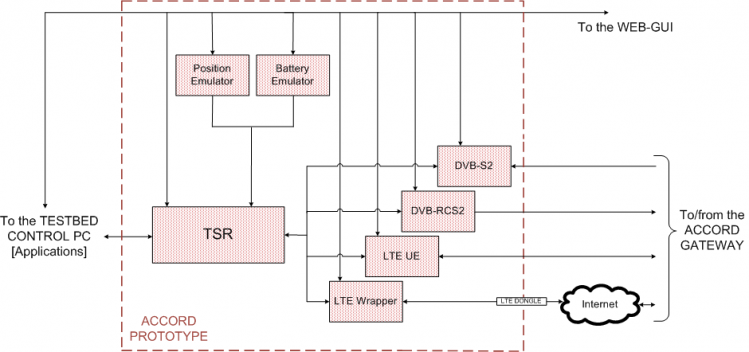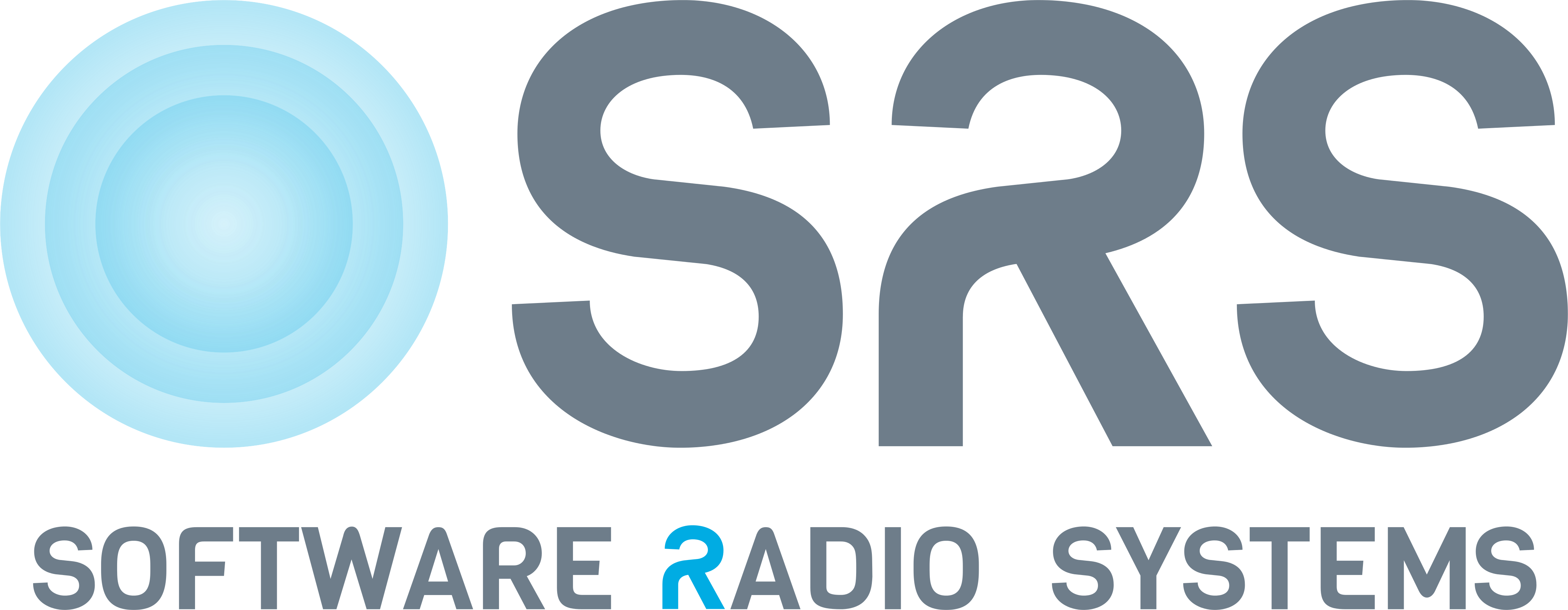
-
StatusCompleted
-
Status date2017-01-30
-
Activity Code7-.039
The main objectives of the project are:
- A complete specification of a fully software-based platform for a family of products that satisfy customers’ specific needs, with minimal customization

- A fully operating testbed, including one terminal prototype and the gateways, which supports one satellite network (based on DVB-S2 for the forward link and DVB-RCS2 for the return link) and one terrestrial network (based on LTE).
The ACCORD TestBed is fully validated in a laboratory by means of complete channel emulation and traffic emulation facilities which are provided by the team.
The ACCORD platform is constructed solely of software modules. A generic ACCORD terminal only uses the following types of hardware:
- SDR boards: all identical, each one can manage all the waveforms of the supported protocols;
- CPU board: hosts the software which controls the SDR boards and manages the whole terminal. It can be equipped with GPU boards, FPGA, ASICs, etc. in order to increase the computational power required to run the SW;
- RF Front / End Radio: one F/E for each network (satellite or terrestrial) is needed.
A terminal based on ACCORD platform can be built using commercial hardware.
The ACCORD platform produces a family of hybrid terminals for dual use:
Automatic Network Detection:terminal able to automatically detect available networks maximizing the opportunity to use available connection.
Automatic and Seamless Vertical Handover: terminal continuously collecting metrics, on which the network selection process is based, from internal stages and from the NCC. No IP packet loss during handover.
Application-specific routing:traffic routed over networks selected by the decision algorithm.
High performance, scalability and security
Form factor and robustness: compact and lightweight terminal able to survive and move even in hostile environments. Different satellite and terrestrial networks can be used.
The ACCORD project produces a solution with no similar competitors among currently available products in the civilian and institutional market. The solution
- provides true satellite / terrestrial interoperability
- detects and switches between different networks without any intervention by the user / operator
- keeps service continuity even on the move, including TCP/IP sessions
- works with GEO, MEO e LEO satellites
- supports different satellite networks including Ka-band, Ku-band, L-band
- supports different terrestrial networks, including WiMax, UMTS, LTE, etc.
- generates fixed, transportable as well as mobile terminals
- includes security protocol management to operate in institutional scenarios
- is modular and easily expandable
ACCORD fully exploits SDR in order to build a terminal which shares the same SDR device between different communication protocols. This is possible thanks to the presence of the Terminal Smart Router and of the fully software developed waveforms, as shown in the following diagram.

Each waveform module is a SDR device and is interfaced with the RF Front-Ends, used to operate the selected communication protocols.
The RF Front/End (Customized Hardware Front-end) is the only component that really depends on the air interface and needs to be implemented in hardware, because the SDR cannot cope with the very different signal processing (i.e. band-pass filtering, LNA, HPA, type of antenna) required by different communication protocols.
An implicit network discovery mechanism performs network discovery using data received by the SDR devices not currently used.
The automatic reconfigurability of the ACCORD terminal is performed through the following diagram.

The terminal includes three types of interfaces: Application&Signalling, Control&Metrics and Command. The Smart Router mechanism is implemented through a decision algorithm which takes as inputs metrics and configurations from other modules and elaborates them to find the best waveform to be used. Once found the waveform, application data are redirected towards it with a Vertical Handover command and internal routing functionalities, until a new best waveform is detected by the algorithm. The configuration and monitoring of the modules is performed through a WEB-GUI application which also gives to the user the possibility to act in real-time on system parameters.
The overall activity lasted 35 months and was organised into 2 phases:
PHASE 1:
- Kick off Meeting (KO) at T0
- System Requirement Review (SRR) at T0+3 months
- Critical Design Review (CDR) at T0+9 months
PHASE 2:
- Kick off Meeting – Phase#2 (KO2) at T0+9 months
- Integration workshop#1 (INT#1) at T0+13 months
- Preliminary SW Verification Review (P-SVR) at T0+13 months
- SW Verification Review (SVR) at T0+17 months
- Integration workshop#2 (INT#2) at T0+18 months
- Test Readiness Review (TRR) at T0+19 months
- Test Review Board (TRB) at T0+25 months
- Final Review(FR) at T0+26 months
Phase#1 is COMPLETED
Phase#2 is COMPLETED






